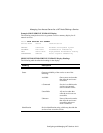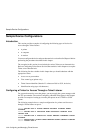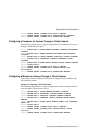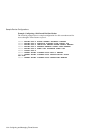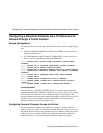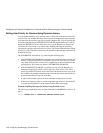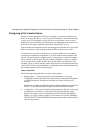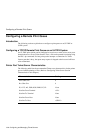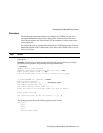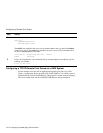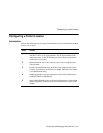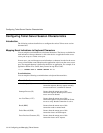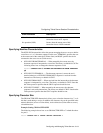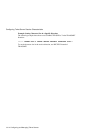
Configuring and Managing Telnet Servers 13-7
Configuring a Personal Computer As a Terminal and for Access through a Telnet Listener
Configuring a File Transfer Partner
The access server supports the file transfer capability of a personal computer on an
access server port. This allows a user of a personal computer to send and receive files
over the LAN. For a particular session, the access server permits a user to control
whether flow control and other special characters are intercepted by the access server.
Note that session nodes frequently control these characteristics for you.
To be available for file transfers, the PC must be logged out from the access server port.
When a connection is made to the port, the port shifts to remote-access mode.
To transfer files, you must set up the access server port and the personal computer
(local partner) to function as the initiator of a session with the remote partner in the
transfer. The remote partner computer can be a session node or a personal computer
that is available on the network. Once the initiator establishes a session to a partner,
you can transfer files in either direction between the initiator and the partner. The
computer serving as the file transfer partner might require some modifications before
a file transfer. To learn what modifications are required, refer to the documentation for
the computer and for the file transfer program.
Partner Guidelines
The following provides guidelines for setting up the partners:
•
Remote partner — You need to disable such characteristics as message
verification, forward switch, backward switch, and local switch when using binary
or ASCII file transfers. If needed, also disable flow control for binary file
transfers.
Additionally for binary or ASCII file transfers, all Telnet indications should be set
to none. Use the SET/DEFINE/CHANGE TELNET SERVER command.
•
Local partner — Flow control should always be enabled on the access server port
and disabled on a session-by-session basis. The Telnet client binary profile
disables flow control (refer to Specifying the Telnet Client Session Profile in
Chapter 11). If flow control is needed, you will need to use the SET SESSION
TELNET CLIENT FLOW CONTROL command. Note that this command affects
only the client partner.



